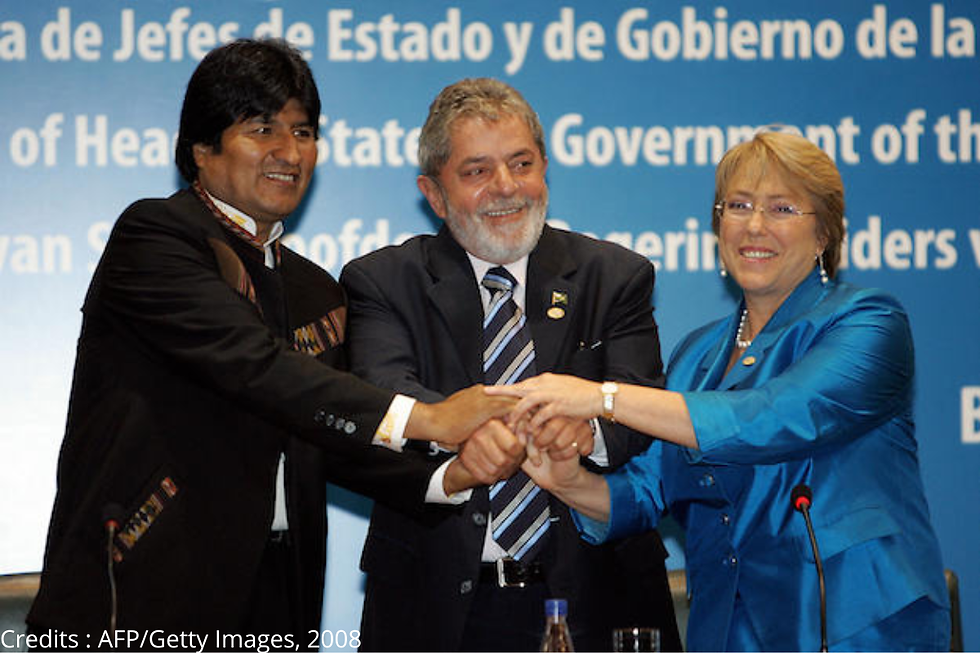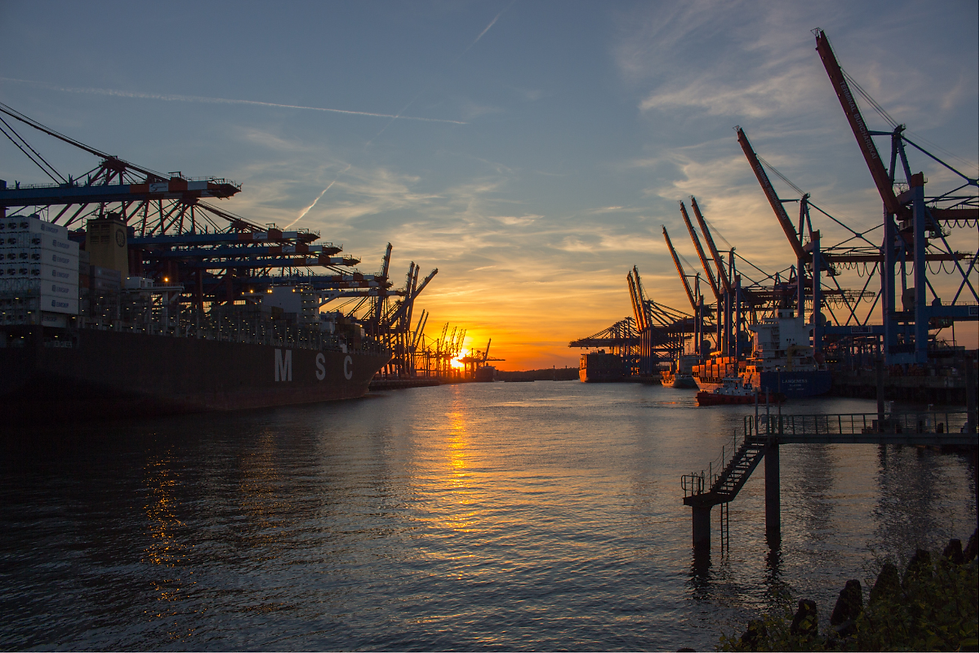The 2000s commodities super cycle in Latin America
- LatamSinFiltro

- 2 days ago
- 5 min read

In Latin America, the commodities boom refers to the rise of commodity prices (energy, agricultural products, minerals and fuels) that occurred at the beginning of the 21st century. The supercycle drove economic growth and prosperity in the region. The living standard improved significantly as a new middle class emerged.
This commodities boom started around 2003 and ended in 2008. There have been other economic cycles during which commodity prices have risen, but the 2000s commodities super cycle is often considered the most important in Latin America.
Obviously, not all Latin American countries benefited from this supercycle. For example, Central American countries benefited less from this price increase than South American countries.
A few figures
Between September 2006 and September 2007, the ECLAC registered a 17.8% increase in commodity prices. Energy products price increased the most: their price rose by 35.2% in a year (ECLAC, 2007).
Between 2000 and 2010, the GDP of Latin America grew by 4% each year (Galdino, 2019). The Gini index, which measures income inequality on a scale of 0 to 1 (0 corresponding to perfect equality and 1 to total inequality), decreased from 0.53 to 0.48 (ECLACSTAT, 2025).
What caused the rise in commodity prices on international markets?
Several factors can explain this price increase, but here are the two main ones:
1.Increase in demand for raw materials from major economies, especially from developing countries, like China or India.
China's rapid economic development has resulted in high demand for raw materials. The Chinese demand is a key factor explaining both price increase and the intensification of Latin American exports to China and, in general, Asia (Jenkins, 2011). Jenkins' research shows that, at the end of the supercycle, the profits from Latin American oil and mineral exports related to the Chinese demand amounted to approximately US$42 billion and US$75 billion, respectively.
2.Speculation on commodity markets.
Since the beginning of the 21st century, the commodities market has been more financialized: a lot of capital has been invested and the profits come more from financial speculation activities rather than from the production and sale of raw materials.
Investors use commodity futures markets to diversify their assets: raw materials have now become financial instruments (Nadal, 2016).
Commodity futures:
A commodity futures is an agreement to trade a quantity of raw material (oil, gold, copper…)at a predetermined price and on a specified future date. In other words, we are buying a material that has not yet been produced with a fixed price which cannot fluctuate after its production.
For example, I am an investor who decides to buy 20 tonnes of wheat in 2025 at a price of €6.15/kg. These 20 tonnes will be produced in 2030. In 2030, I will pay the price that was determined in 2025.
Initially, the goal of these contracts was to:
Protect farmers and producers against a potential drop in prices.
Protect buyers against potential price increases.
These contracts allowed investors to ease the impact of seasonal variations on harvests and unpredictable events on prices. However, speculative investors began to take an interest in these markets, seeking, through arbitrage (between the spot price and the future price), to maximize gains. Arbitrage consists of taking advantage of the variations in price of a product in different markets. To make it simple, you buy something US$20 and resell it on another market for $US25.
Spot price: the spot price of a product or a bond is the price agreed upon in a transaction when it is done, unlike the future price, which is used when a contract is concluded in the present but the payment is done later.
Investors (who buy and sell commodity futures) choose to have a short or long position:
In a long position, the investor who buys makes a profit if the closing price of the contract (the price at the end of production) is higher than the initial price that he actually paid, and loses money if it is lower.
In a short position the investor who sells makes a profit if the closing price of the contract is lower than the initial price and loses money if it is higher.
Financial agents invest in the commodities market when the global economic climate is favorable and invest less during periods of economic uncertainty (Cheng & Xiong, 2013). The intervention of these financial agents and their behavior exacerbate the price volatility of commodities. When investments in the commodities market increase, prices tend to rise; conversely, when financial agents withdraw their capital from the market, prices tend to fall.
The commodities super cycle and politics

The supercycle also led to major political transformations in several countries of the region. The period of economic growth coincided with the emergence of new left-wing governments in Latin America. The revenue generated by rising commodity prices has enabled progressive governments to implement new social and redistributive policies to tackle poverty issues. The positive results of left-wing governments were partly made possible thanks to the commodities boom, which also played a key role in the political stability of the early 2000s in Latin America.
The Commodities Consensus
Indeed, the increase in demand and consequently in commodity prices has significantly improved the standard of living in Latin America. However, the supercycle has also accelerated and exacerbated the deindustrialization and re-primarization of the region.
Gradually, left-wing governments have favored an extractivist economic model: primary exports have become the backbone of the economy, representing the main source of income for many Latin American countries. The social programs implemented at the beginning of the century were mainly if not totally financed by raw material exports. Similarly, growth rates depended on commodity prices and the performance of extractive activities.
Click here if you want to learn more about the phenomenon of re-primarization of Latin America.
Galdino associates the commodity consensus with (Latin American) governments that are both producers and regulators (they produce and distribute wealth), and with social policies aimed at more vulnerable social classes, whose funding comes mainly from profits generated by the exploitation of non-renewable resources (Galdino, 2019).
Progressive left-wing governments have chosen to address the problems of poverty and socio-economic inequality by promoting an economic model likely to deliver positive results in the short run, choosing therefore to abandon ISI policies of the traditional left during the 1960s and 1970s (Galdino, 2019).
In the 20th century, the implementation of the Washington Consensus In Latin America led to massive privatizations and the development of financial markets. In the 21st century, a lot of Latin American countries have now adopted the Commodities Consensus basing their wealth on the exploitation and export of raw materials.
#LatinAmerica #CommoditiesBoom #RawMaterials #Commodities #CommoditiesSupercycle #Economy #Politics #PinkTide #Deindustrialization #InternationalTrade #Reprimarization #Extractivism
Bibliography:
CEPAL (2007). Balance preliminar de las economías de América latina y el Caribe. Naciones Unidas: cepal.
Cheng, Ing-Haw y Xiong, Wei (2013). “The Financialization of Commodity Markets”. NBER Working Paper, nº 19642.
Galdino, Gabriel (2019) “CONSENSO DE LOS COMMODITIES NA AMÉRICA LATINA: a especialização no setor primário exportador como limite ao desenvolvimento econômico”. ResearchGate. https://www.researchgate.net/publication/339198594_CONSENSO_DE_LOS_COMMODITIES_NA_AMERICA_LATINA_a_especializacao_no_setor_primario_exportador_como_limite_ao_desenvolvimento_economico.
Jenkins, Rhys. El “efecto China” en los precios de los productos básicos y en el valor de las exportaciones de América Latina. Revista de la CEPAL, 2011, vol. 2011, no 103, p. 77-93.
Mayer, Jörg (2009). “The Growing Interdependence between Financial and Commodity Markets”. unctad Discussion Papers. http://unctad.org/en/Docs/osgdp20093_ en.pdf
Nadal, Alejandro. Precios de materias primas y especulación financiera. márgenes, 2016, p. 107.




Comments